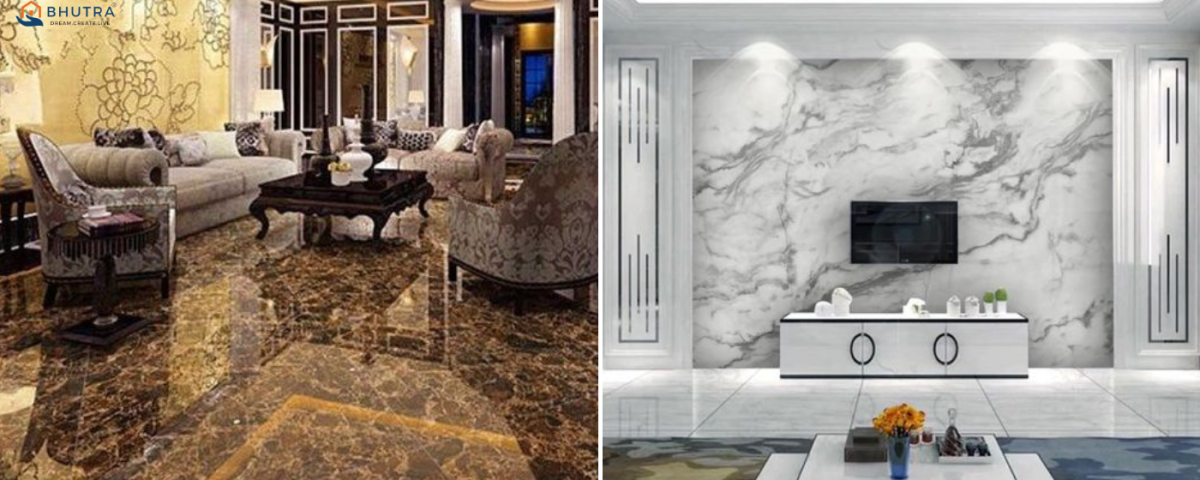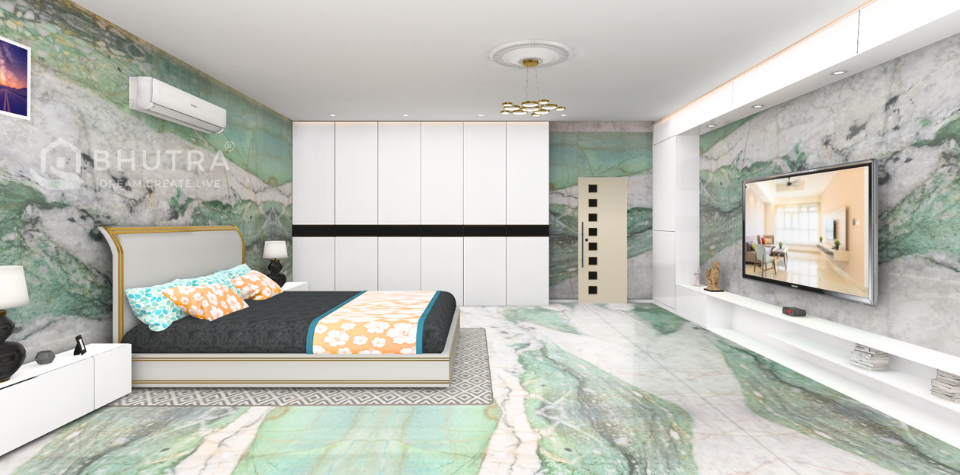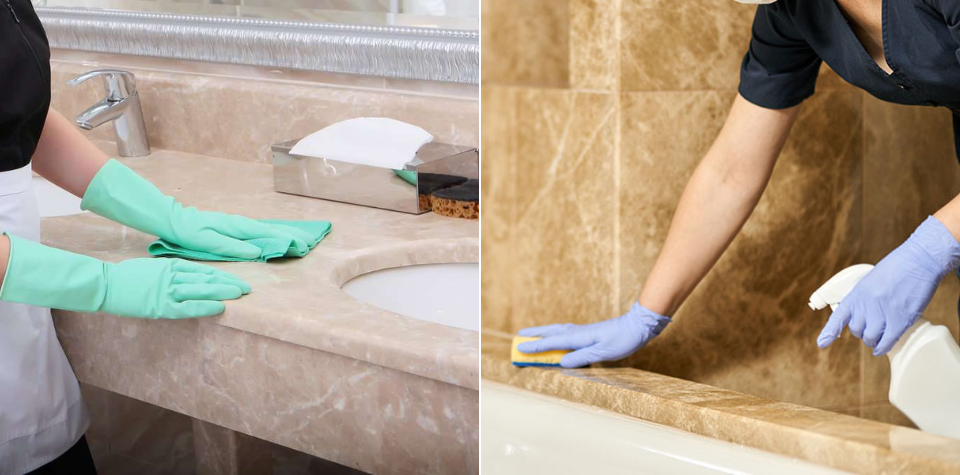Where to use imported marble?

Latest Granite Flooring Designs in India
January 11, 2024
Top 10 Lowest Price Italian Marble in India
January 16, 2024Marble, a timeless symbol of luxury and sophistication, has transcended its classical roots to become a staple in modern interior and exterior design.
As technology advances, the world becomes a smaller place, allowing for the seamless integration of global elements into our homes and commercial spaces.
Imported marble, with its diverse range of colors, patterns, and origins, has become a sought-after choice for those looking to elevate their surroundings.
In this comprehensive guide, we’ll explore the various facets of using imported marble, from its advantages and popular applications to cost considerations, maintenance tips, and emerging trends.
Introduction of Imported Marble
Imported marble, a luxury material sourced from various regions, has gained popularity in interior design due to its unique characteristics and diverse color palette.
This trend is driven by the desire to elevate spaces with global elegance and a cosmopolitan sensibility. This article provides a comprehensive guide for those considering incorporating imported marble into their living or working spaces, from residential sanctuaries to commercial establishments.
The article explores the intricate details of working with this exceptional material, whether it’s a statement piece for a kitchen countertop or transforming an entire floor with marble’s timeless beauty. This exploration helps make informed decisions for a refined and sophisticated ambiance.
Benefits of Imported Marble
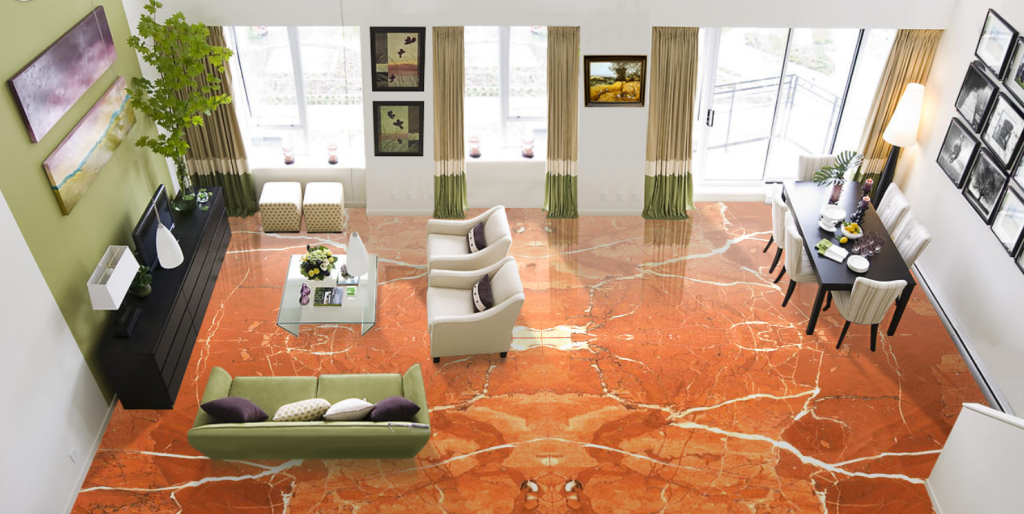
1. Exquisite Aesthetics: The unparalleled beauty of imported marble lies in its rich color palette and intricate veining. This natural stone adds a touch of opulence and timelessness to any space, making it a preferred choice for those who appreciate the finer things in life.
2. Durability and Longevity: Beyond its visual appeal, imported marble boasts remarkable durability. When properly cared for, it can withstand the test of time, making it a worthwhile investment for both residential and commercial properties.
3. Unique Patterns and Colors: One of the key attractions of imported marble is the diversity it offers. From the classic white elegance of Carrara marble to the dramatic veins of Calacatta, each type presents a unique visual story, allowing for personalized design expressions.
4. Increased Property Value: The addition of imported marble can significantly enhance the value of a property. Its association with luxury and sophistication makes it an attractive feature for potential buyers or tenants.
Where to use imported marble?
Imported Marble in Residential Spaces
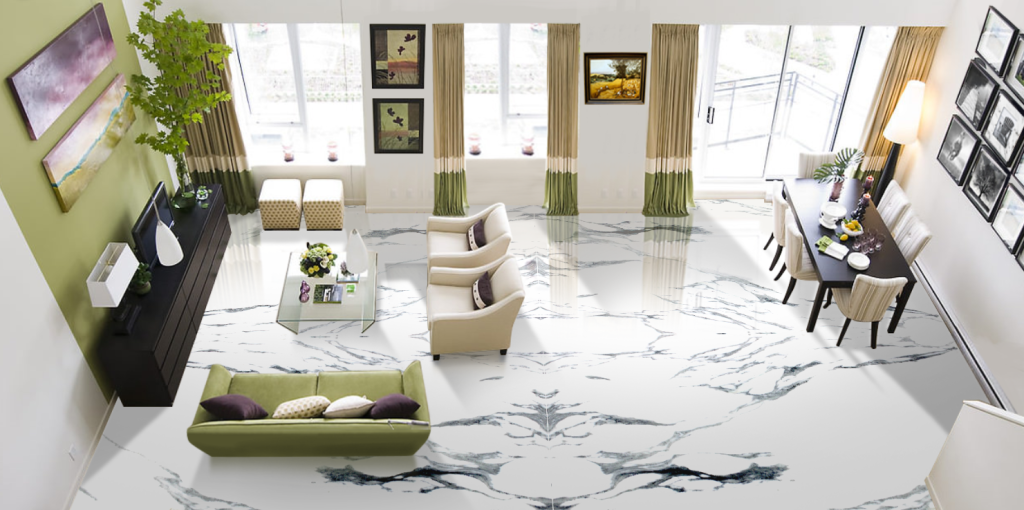
Elegant Living Rooms: The living room, often the heart of a home, benefits from the sophistication of imported marble. Whether as flooring or accent pieces, it transforms the space into a refined haven.
Opulent Bedrooms: In bedrooms, the use of imported marble can evoke a sense of luxury and tranquility. From floors to countertops, it contributes to a serene and elegant atmosphere.
Luxurious Bathrooms: Bathrooms, with their functional requirements, become showcases of luxury when adorned with imported marble. The material’s water-resistant nature makes it an ideal choice for various applications.
Gourmet Kitchens: Kitchens, being the hub of culinary activities, gain a touch of glamour with imported marble countertops. The smooth surface also provides an easy-to-clean and hygienic cooking environment.
Commercial Applications

Upscale Hotels and Resorts: The hospitality industry often opts for imported marble to create an ambiance of opulence. From lobbies to suites, it contributes to the overall guest experience.
High-End Restaurants: Fine dining establishments leverage the visual appeal of imported marble to elevate the dining atmosphere. Tables, countertops, and even flooring contribute to the overall aesthetic.
Executive Offices: In corporate settings, imported marble conveys a sense of success and sophistication. Executive offices, boardrooms, and reception areas benefit from the material’s timeless allure.
Retail Showrooms: Luxury brands frequently use imported marble in their showrooms to showcase products in an environment that aligns with their brand image. The material becomes an integral part of the retail experience.
Outdoor Usage
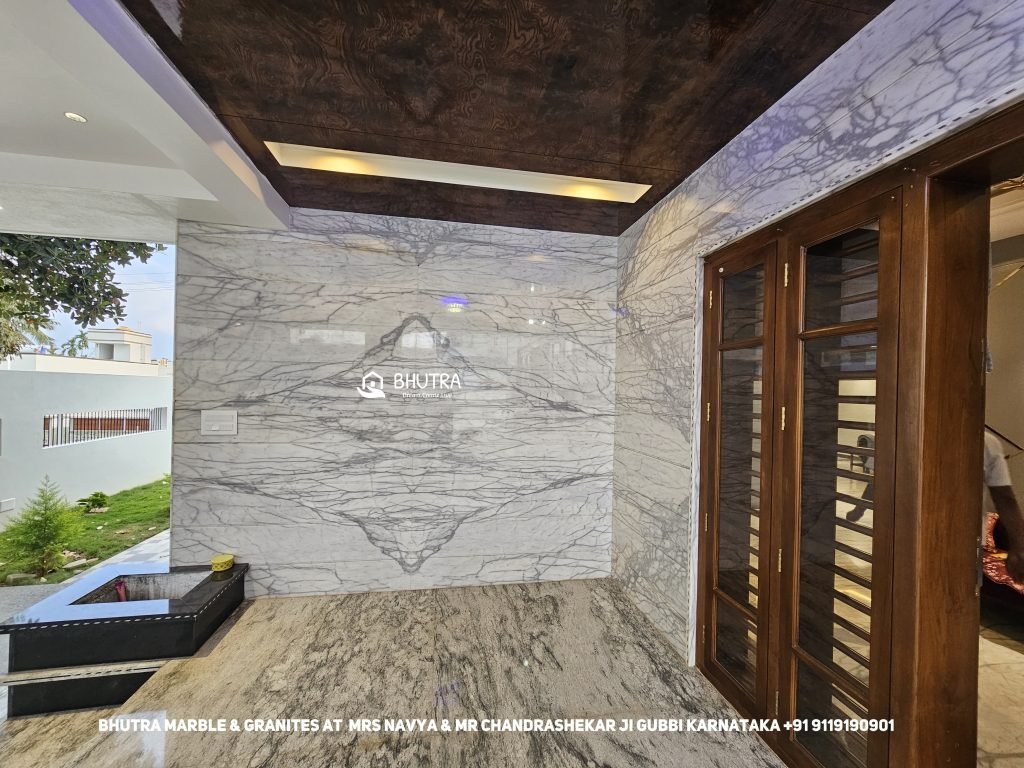
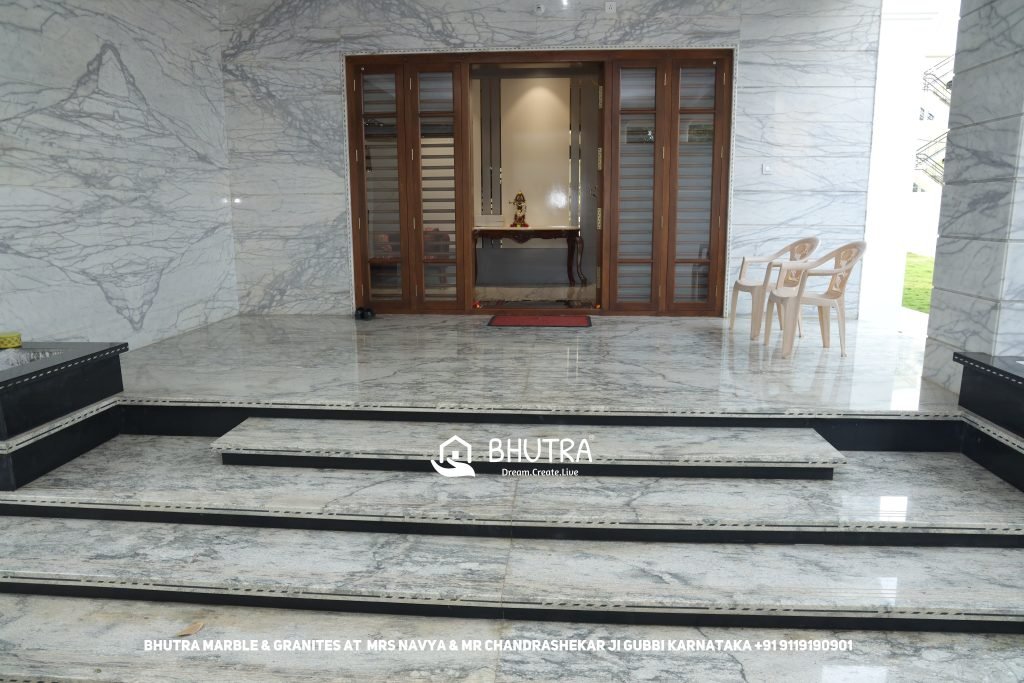
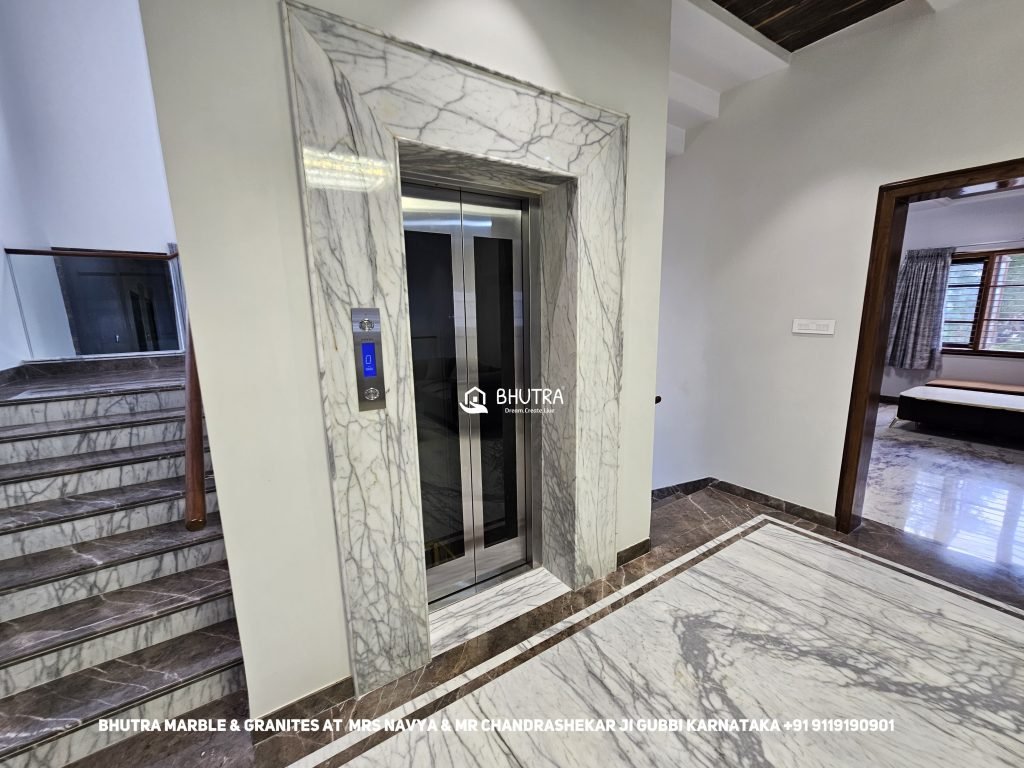

Patios and Terraces: Imported marble isn’t limited to indoor spaces. Patios and terraces adorned with marble flooring or accents create seamless transitions between indoor and outdoor living.
Stunning Pool Surrounds: For those seeking to redefine poolside luxury, using imported marble for pool surrounds adds a touch of sophistication. Its cool surface is also comfortable for bare feet.
Landscaping with Imported Marble: In landscaping, imported marble can be integrated into pathways, borders, and even sculptures, adding an artistic dimension to outdoor spaces.
Cost Considerations
Initial Investment: Imported marble, while luxurious, comes with an initial investment. Understanding the cost implications helps individuals make informed decisions based on their budget.
Long-Term Value: Despite the upfront cost, the long-term value of imported marble, both aesthetically and in terms of property value, justifies the investment.
Return on Investment: Properties featuring imported marble often see a higher return on investment due to increased market appeal. This makes it a strategic choice for those considering resale or rental.
Tips and Trends
Tips:
Cleaning Procedures: Regular cleaning with pH-neutral cleaners preserves the marble’s shine. Avoiding abrasive materials during cleaning is essential for preventing scratches.
Avoiding Common Mistakes: Common mistakes, such as using harsh chemicals or neglecting regular maintenance, can compromise the appearance of imported marble. Awareness of these pitfalls is key.
Seeking Professional Help: In cases of damage or extensive wear, seeking professional help for repairs and restoration ensures the longevity of imported marble surfaces.
Trends:
Innovative Designs: Designers continually push the boundaries, creating innovative patterns and applications for imported marble. From geometric designs to artistic installations, the possibilities are expanding.
Technology Integration: Advancements in technology, such as precision cutting and 3D modeling, allow for intricate designs and patterns in imported marble, opening new avenues for creative expression.
Fusion with Other Materials: The integration of marble with other materials, such as metal or glass, creates unique textures and contrasts. This fusion adds a contemporary twist to traditional marble applications.
Final Decision
In the grand tapestry of design possibilities, the use of imported marble emerges as a definitive choice for those seeking unparalleled beauty, longevity, and a touch of global sophistication.
The advantages, ranging from exquisite aesthetics to increased property value, position imported marble as a versatile and timeless material.
As we conclude this exploration, it becomes evident that the decision to incorporate imported marble into your living or commercial spaces is not merely a stylistic one; it’s an investment in luxury and enduring elegance.
From the opulent floors of high-end residences to the refined surfaces of executive offices, imported marble leaves an indelible mark on the spaces it graces.
FAQs
Q1: Is imported marble suitable for all climates?
Yes, imported marble is well-suited for various climates. Its durability and resistance to temperature variations make it a versatile choice for both interior and exterior applications.
Q2: How can I maintain the beauty of imported marble?
Regular cleaning with pH-neutral cleaners, avoiding abrasive materials, and scheduling professional sealing as needed are essential for maintaining the beauty of imported marble.
Q3: Does the cost of imported marble justify the investment?
While the initial investment in imported marble may be higher, the long-term value it adds to the property, both aesthetically and in terms of market appeal, often justifies the cost.
Q4: Are there sustainable options for imported marble?
Yes, choosing suppliers committed to responsible sourcing and exploring eco-friendly shipping options contributes to the sustainability of using imported marble.
Q5: Can imported marble be used in outdoor spaces?
Absolutely, Imported marble is a versatile material suitable for outdoor spaces, including patios, terraces, and pool surrounds, adding a touch of luxury to outdoor living.
Q6: What are the emerging trends in imported marble usage?
Emerging trends include innovative designs, technology integration for intricate patterns, and fusion with other materials, offering fresh perspectives on incorporating imported marble.
Q8: How can I choose the right type of imported marble for my project?
Consider factors such as the overall interior theme, the specific qualities of marble varieties like Carrara, Calacatta, and Emperador, and the maintenance requirements to make an informed decision.

